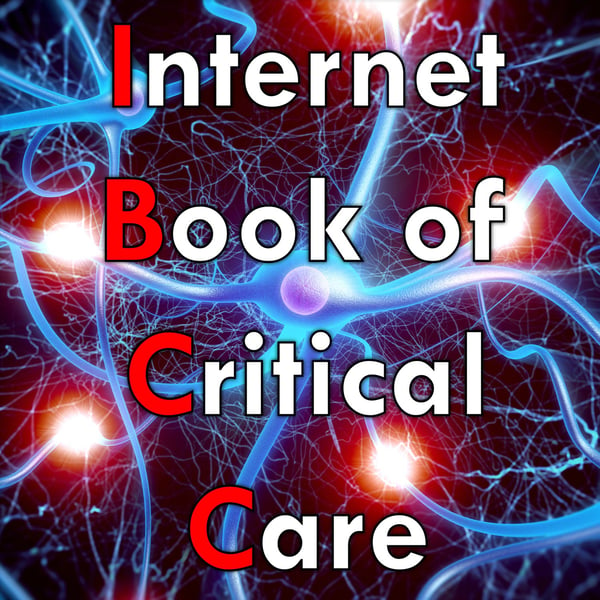IBCC Episode 5 - Bradycardia
The Internet Book of Critical Care Podcast
Adam Thomas
5 • 714 Ratings
🗓️ 3 October 2018
⏱️ 18 minutes
🧾️ Download transcript
Summary
Bradycardia can be scary. Especially when your cardiac output is being pulled down by that slow rate. Take a listen to hone your resuscitation skills in the electrical and medical arms of the bradycardia treatment.
Transcript
Click on a timestamp to play from that location
| 0:00.0 | So welcome back to the IBCC podcast. |
| 0:05.0 | I'm Josh Farquess. I'm here with Adam Thomas and we're going to walk through bradycardia. |
| 0:09.0 | All right boys and girls. So bradacardia. Today we're going to talk about why it's dangerous, why the patient has bradacardia. |
| 0:15.0 | And then this treatment algorithm Josh came up with for symptomatic bradacardia. So Josh, the triage nurse has two |
| 0:21.7 | patients or your resident is telling you about two patients. There's a bradicardic and a tachycardic. |
| 0:27.4 | Which one are ready with the story are you more worried about? I'm always more worried about |
| 0:32.1 | the bradycardic patients for a couple reasons. You know, first of all, cardiac output equals heart rate |
| 0:37.2 | time stroke volume. |
| 0:38.3 | So if you have a patient with bradycardia and their heart rates in the 30s or 40s, |
| 0:42.4 | unless that patient's left ventricle is able to suddenly double in size, their cardiac output is going to be low. |
| 0:48.3 | So you can basically know from their super low heart rate that they're in shock and they're having |
| 0:53.2 | a low cardiac output. |
| 0:56.6 | So that's the first reason that bradycardia just gets me upset. |
| 1:01.5 | And I think the second reason is just overall from a prognostic standpoint, a lot of bradycardic patients are kind of trying to die. |
| 1:03.2 | There's that premortem brady arrest pattern. |
| 1:05.9 | So anytime someone starts braiding down, that always makes me nervous. |
| 1:09.2 | Whereas tachycardia, when your heart rate increases, that's actually going to drive up your cardiac output. Now, true, you know, your volumes might |
| 1:15.4 | drop a little bit. Your diastolic feeling might drop a little bit. But by and large, unless your |
| 1:19.3 | heart rate is like insanely high, it's not going to really cause you to go into shock or die. |
| 1:23.6 | So this is a call to arms. Think more about that bradicardic patient. Just don't leave them in the corner while you're working up the septic patient. So that moves on to the next section. You got to think about why your patient is bradicardic. And the traditional teaching of intrinsic versus extrinsic, I find those lists are super long and it's super difficult to figure out. But in general, you're thinking three questions. Are there signs of |
| 1:44.4 | infection or inflammation in this patient? Are there medications or toxins on board? And what's the |
| 1:49.6 | overall level of fitness of your patient? But Josh has broken this down into an easier |
... |
Please login to see the full transcript.
Disclaimer: The podcast and artwork embedded on this page are from Adam Thomas, and are the property of its owner and not affiliated with or endorsed by Tapesearch.
Generated transcripts are the property of Adam Thomas and are distributed freely under the Fair Use doctrine. Transcripts generated by Tapesearch are not guaranteed to be accurate.
Copyright © Tapesearch 2025.

